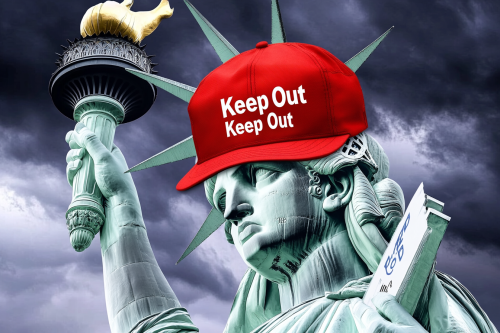 • Media Center » Video Immigration News
• Media Center » Video Immigration News
In a special column in the Washington Post, Steven Malanga says that United States immigration policy favors migrants from poorer nations who have lower levels of education and little job training. In contrast, immigration policies in nations such as Australia, Canada, and Ireland attract more highly educated immigrants.
Malanga wrote that during the 1960s, the United States changed its immigration policies from a quota based system based on an immigrant's country of origin to broader "hemispheric quotas". Preference was also given for family members of people already residing legally in the US.
In contrast, other highly popular destination countries for migrants have reshaped their immigration policies in the last 20 years to attract more highly skilled migrants.
Australia's General Skilled Migration program allows migrants with experience in a large list of occupations to qualify for a permanent visa. "Today, 70 percent of Australia's immigration is skills based," Malanga wrote.
Malanga says that Canada has chosen a different approach to Australia's system by favoring migrants with higher levels of education and not specifically targeting skills in certain occupations. Canada's government has also been actively funding services and programs designed to assist migrants with settling into their new country.
The United States Congress proposed legislation last summer that would change the US system to a more skills based policy, according to Malanga, but other provisions in the bill that would grant amnesty to illegal immigrants and a guest worker program proved too controversial. The legislation died before it could even be debated.
Many industry groups are pushing for the US government to do something about the country's immigration policies. The favorite topic of discussion continues to be the H-1B visa cap -- currently set at 65,000 a year -- which corporations such as Microsoft, Sun Microsystems, and Google would like to see raised.
Another impetus for skilled immigration reform in the US is competition from the European Union's proposed "blue card". The blue card, inspired by the US green card and named after the color of the EU flag, is designed to attract skilled migrants to the 27-member bloc so it can better compete with the traditional destinations like Australia and Canada.
The European Commission stated that the EU needs 20 million migrants in the next 20 years to combat an aging workforce and to plug skills gaps.
The issue of US immigration reform, especially skilled migration, continues to heat up political debate in the run-up to the presidential elections in 2008. Unfortunately, the topic is proving to be too hot to touch, according to Malanga, with candidates skirting the question when asked for their positions on the issue.
"Clinton and Barack Obama make vague statements in their campaign materials about preserving the family preferences system, which amounts to little reform," Malanga writes.
"Mitt Romney has talked about the advantages that well educated immigrants bring to our high-tech industries, but a well-rounded immigration policy should be about more than just importing workers for Silicon Valley," he added.
Steven Malanga is a senior editor with City Journal and co-author of The Immigration Solution: A Better Plan Than Today's.




